From the SWISS BULLETIN: Project Mule Museum in Törbel
By Mariette Herzig and Josefine Jacksch
Background
The idea of creating a mule museum is already old. When the association “Interessengemeinschaft für das Maultier” (IGM) was founded 30 years ago, some members wished to realize this idea at some point. They started to collect everything about the mule and they could present small exhibitions in other museums in Switzerland.
In 2007 the working group “Museum” was formed, in 2012 the association “Mule Museum Switzerland” was founded. Its task was to push the idea of a mule museum forward.
Already in 2012, a permanent exhibition was opened within the Open-Air Museum Ballenberg, which still exists today. It shows the history of the muleteers in Switzerland and a small sust (goods handling and resting place for the muleteers).
The search for a proper location and a building for an own mule museum was started. The association found a matching barn in Turtmann, a village in the Canton of Valais. It would be the ideal location, as this is where the large mule and horse markets in the canton of Valais used to be held, and it was the starting point of the mule trails into the southern side valleys and into Italy. Unfortunately the project could not be started until now for various reasons. It has been put on hold until further notice.
When it was founded in 2017, the Swiss Mule Museum Foundation was given an old barn and stable in the Valais mountain village of Törbel by three families. The barn is already 350 years old and stands in the middle of the historic village center. It is registered in the Swiss list of villages worthy of national protection.
Törbel is a real stroke of luck. It was the village with the most mules at that time; it was famous for its muleteers, who showed good handling in dealing with the animals; the artist Helen Güdel still lives here, who wrote and illustrated the children’s book about the mule “Apollo”. She also has her small Hosennen-Museum; the people of Törbel donated many objects to the museum, which were formerly used in the work with the mules; the political community and the inhabitants are fully behind the project and help everywhere; with the association and open-air museum “Urchigs Terbil” we could agree that our museum would be integrated into its tour.
The foundation started looking for sponsors. It was not easy, but little by little money came in. Not only from Switzerland, but also from abroad: Loveland Longears Museum & Sculpture Park, Meredith Hodges.
The foundation engaged the young architect Thomas Juon and various craftsmen from Törbel and the surrounding area to renovate the barn. In October 2019 the renovation plans were drawn up and fortunately the craftsmen were able to start work despite the Corona crisis. Everyone was very motivated and did a good job.
Spring 2020
At the end of May we (Ursi, Elke, Josefine and Mariette, members of the Foundation) met for the first time with Beat Gugger in Törbel, the exhibition expert who had already helped with the exhibition at Ballenberg. He will again develop an exhibition concept.
On a short tour of the village, Beat was able to get a first impression of this mountain village high above the Visper valley. He was already impressed by the narrow road and the steep slopes just behind the crash barriers during the bus ride here. He immediately realized that up here one could only work with mules.
During a stopover in the barn, we got an idea of the progress of the renovation work and the future exhibition rooms. During the tours, the historical building (stable barn) will be shown on the one hand, and the mule and its history in the mountain region will be presented on the other.
Erich Wyss, village historian and one of the guides, accompanied us on to the baking house, where he explained how rye bread (a Valais specialty) was baked for the whole village at that time. We were all very impressed by Erich’s enormous knowledge.
In the late afternoon we had to go to the civil defense facility. The community had provided us with a room there as an intermediate depot. The numerous museum material, which had been stored in several barns until now, was collected by the volunteers Erich Wyss, Ludwig Petrig, Othmar Zuber and Thomas Juon and delivered to the intermediate depot. Elke, Ursi, Beat, Josefine and Mariette sorted the things according to origin. We were simply overwhelmed by the crowd that gathered there. Already that evening we started with the inventory. This meant that every single object had to be taken in hand, marked with an inventory number on a label, photographed and recorded in an Excel spreadsheet with details such as name, size, material, origin.
The next day, the entire Board of the Foundation met with the architect and the carpenter to inspect the construction site. The two explained the progress of the work and drew attention to new problem areas, and the next steps were discussed. In the evening, the Foundation Board discussed with the people from “Urchigs Terbil” what the future cooperation should look like in concrete terms.
The inventory could not be completed in full, so after two weeks Josefine and Mariette travelled to Törbel again for three days. In the meantime, the foundation has already received new objects from the village as gifts.
We were only allowed to use the intermediate depot for a few weeks. Therefore all material had to be transported to Turtmann, where the foundation rented an old airplane hangar as a depot. Many objects that were donated to the foundation by the IGM and private persons are already stored there.
Before the exhibition, the objects must be cleaned, greased and prepared for the return transport to Törbel. Especially the leather objects are in dire need of it, as they were exposed to dry air and dust in the barns for years. For this cleaning action we need support from volunteers and members of the IGM.
Summer 2020
An old building often turns out to be a bag of wonders, as is our barn. Instead of renewing only a small part of the brickwork as planned, the foundation had to be renewed on three sides. It also turned out that a lot of earth had been washed up in front of the entrance, so that the lower beams rotted and had to be replaced. The budget had to be adjusted several times, resulting in additional costs of several 10’000 Swiss francs. The major renovation work could now be completed. The wooden walls still had wide gaps, which we filled ourselves with a special stuffing tape.
Meanwhile Beat has created an exhibition concept. The upper floor, where the hay was once stored, will be the actual exhibition space. One part will tell the story of the mules in the Valais mountain villages, with Törbel as a representative. The other part shows the mules in use as an all-round means of transport in the surrounding valleys and the wider surroundings.
Autumn 2020
The inventory of all museum objects from Törbel and Turtmann is now complete. The data of the Excel spreadsheet have been fed into the database of the Association of Museums of Valais. Unfortunately, some errors occurred. So now all data sets have to be rechecked and then activated individually.
The opening ceremony, which was initially planned for the end of this October, has been postponed to spring 2021. The reason for this is, as is now the case everywhere, the coronavirus. But now the Foundation is giving us more time for the preparations.


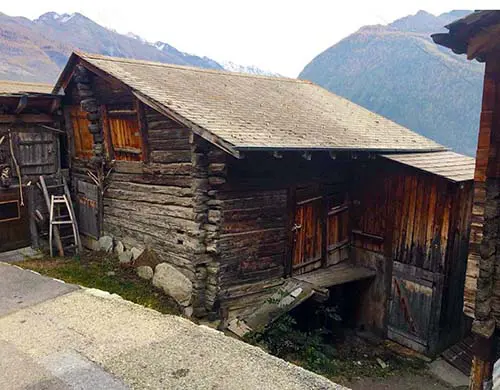


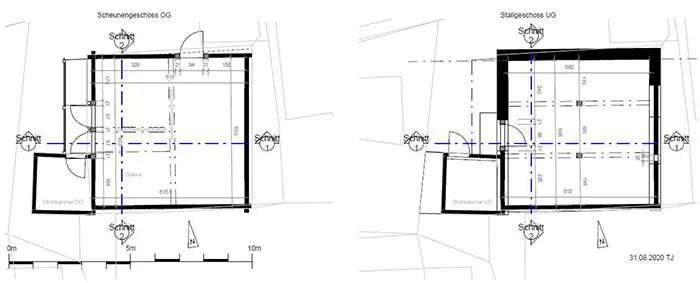
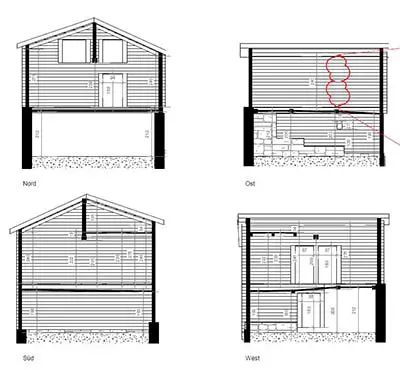


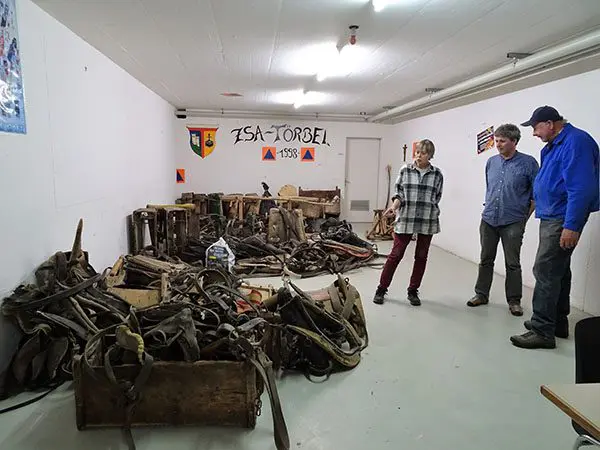
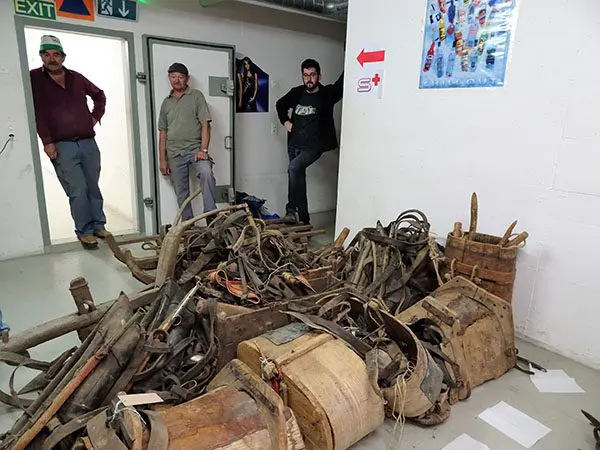










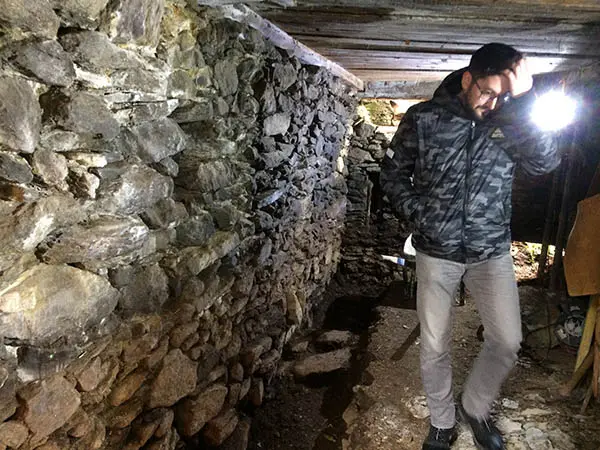

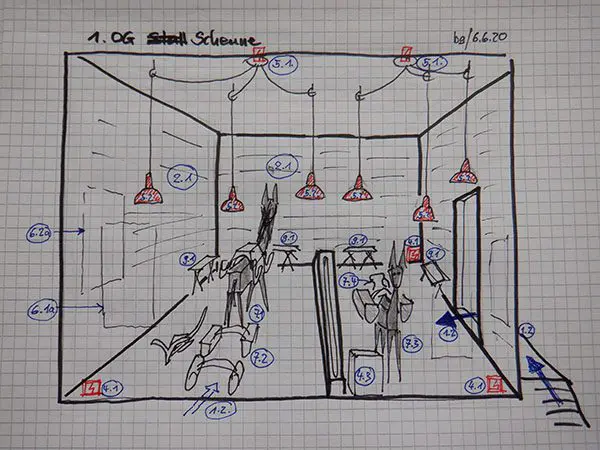
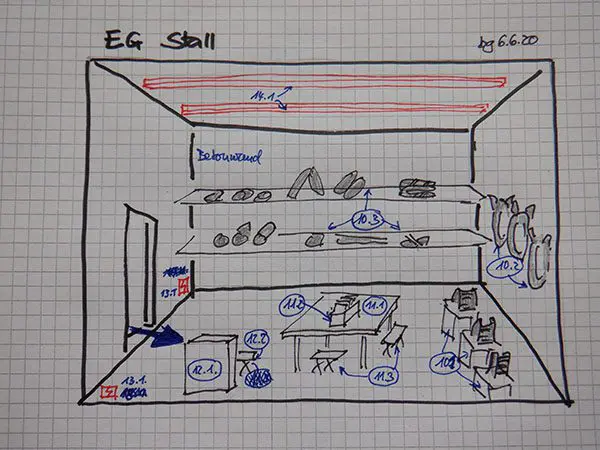


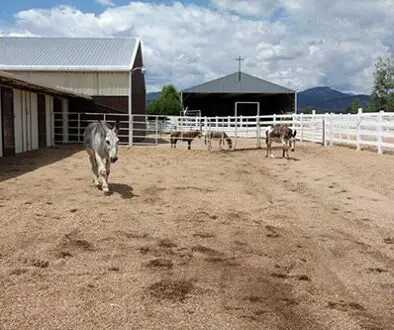


Cathy Marsi
February 28, 2021 @ 11:44 am
Great place for a Museum! The piles of old Tack had to have taken months to clean and sort, and the building was the perfect place to display it.
If I ever make it to Switzerland, that would definitely be on my list of places to go.